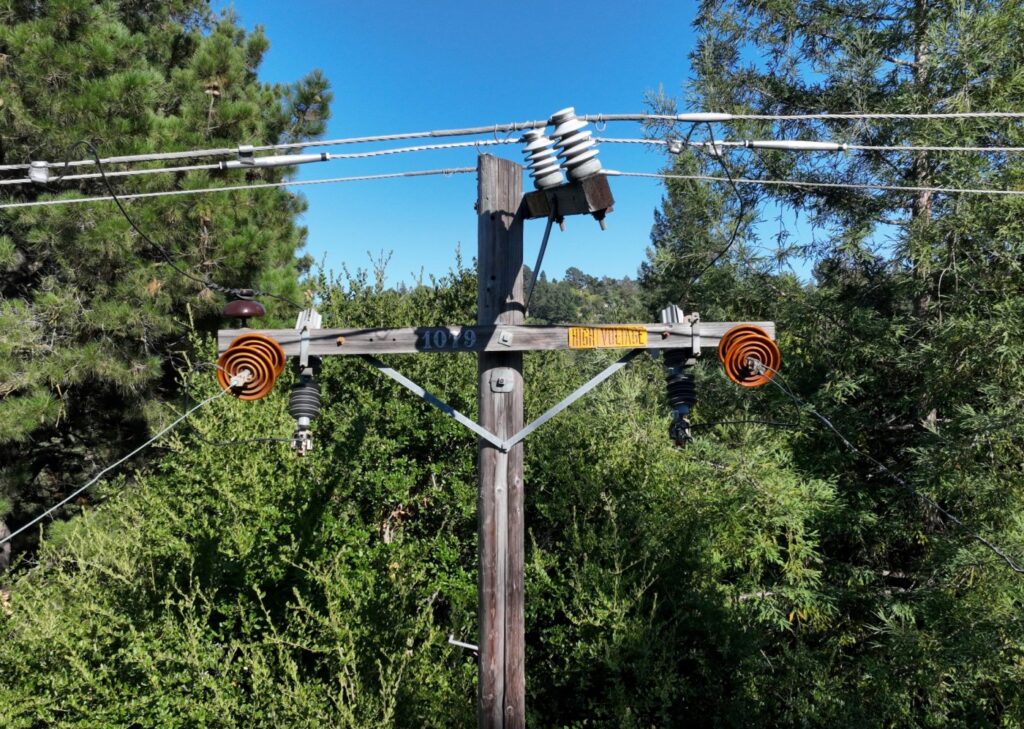OAKLAND — PG&E bills may hop higher, consumers warn, if the utility lands state approval for its general rate request — a proposal that includes wide-ranging plans to bury power lines. The state Public Utilities Commission is slated to render a final decision by year’s end on PG&E’s general rate case proposal, including authorizing PG&E to oblige customers to pay the cost of burying electricity lines in the company’s service territory. “We have a real affordability crisis for utility costs,” said Mark Toney, executive director of The Utility Reform Network, or TURN.
“One of the biggest cost drivers is this massive expense for burying 10,000 miles of PG&E power lines. ” TURN, a consumer group, has a straightforward proposal to deal with the issue of power line safety: insulate the lines. Oakland-based PG&E’s power lines have come under intense scrutiny in the wake of a string of catastrophic — and lethal — wildfires over the last several years.
These fatal fires included blazes in 2015 in Amador County, 2017 in the North Bay Wine Country and 2018 in Butte County. The fires were all caused by PG&E’s equipment coming into contact with adjacent trees or other vegetation. The infernos erupted over a stretch of years after PG&E caused a fatal gas explosion that leveled a San Bruno neighborhood in 2010, a deadly disaster that killed eight and eventually led to PG&E’s conviction for felonies the utility committed before and after the natural gas blast.
PG&E customers could greatly benefit from the insulation of power lines rather than a program to bury them underground, in TURN’s view. “Insulated lines are completed much more quickly than burying the lines and at a fraction of the cost,” Toney said. “You are not waiting 10 to 20 years to get the safety you need.
You are doing it within a few years. ” The cost of insulation of overhead lines would be about $800,000 a mile, Toney estimated. The cost to bury 10,000 miles of PG&E power lines is roughly $3.
7 million to $5. 2 million a mile, he added. PG&E executives believe the burial of power lines makes the best sense, according to a company spokesperson Jennifer Robison, who provided the utility’s current views on the issue.
“Undergrounding electric distribution lines in high fire risk areas is the most effective long-term solution for keeping customers and communities safe,” PG&E stated. “Undergrounding eliminates nearly all wildfire ignition risk from those lines and helps to reduce long-term costs. ” Toney, however, notes that Southern California Edison, the principal provider of electricity services in sprawling Los Angeles County and nearby regions, has embarked on a quest to insulate 8,000 miles of overhead power lines, apparently preferring that approach to bury lines.
“Covered conductor is a critical tool to quickly mitigate the threat of wildfires that could be caused by debris blowing into power lines. It helps keep our communities safe,” Steve Powell, Edison’s chief executive officer, stated in July 2022 in a prepared release. Edison executives estimate that the cost to cover overhead lines with insulation could be around $5 billion for insulated covers on roughly 8,000 miles of those power lines.
By comparison, current estimates to bury 10,000 miles of PG&E power lines would be in the range of $15 billion to $30 million. “Undergrounding reduces the need for trimming and removing trees, and over time reduces the need for other wildfire mitigation activities,” PG&E stated. ”Undergrounding lines improves reliability and long-term resiliency.
” PG&E believes its approach also reduces the likelihood of weather-related and wildfire safety outages, and reduces the potential for damage to overhead powerlines. “We support wildfire safety,” Toney said. “We don’t want bare wires all over the place.
” The proposal for even higher PG&E bills arrives at a time when prices paid each month by the utility’s residential customers has skyrocketed in recent years. In March 2018, roughly five years ago, PG&E’s average bill for the typical residential customer who receives electricity and gas services from the utility was $169. 73 a month.
In January 2023, the average combined bill for PG&E’s typical residential customer was $240. 73 a month. This means that PG&E monthly bills have zoomed higher by an overall 41.
8% in about five years, or an average increase of 8. 4% a year. In sharp contrast, the overall Bay Area inflation rate as measured by the consumer price index has jumped 18.
9% in five years, or an average of 3. 8% a year. Put another way, PG&E bills over the past five years have been rising more than twice as fast as the overall inflation rate in the Bay Area.
Some observers argue that PG&E’s utility costs are helping to fuel inflation in this region. Toney believes that the PG&E power line burial program might oblige the company’s customers to help line the pockets of wealthy investors on Wall Street. “PG&E’s scheme to underground power lines is the most expensive and most costly method of tackling this challenge,” Toney said.
“But it does provide Wall Street investors with a $60 billion gift, paid for by consumers. ”.
From: eastbaytimes
URL: https://www.eastbaytimes.com/2023/08/21/pge-month-bill-rate-power-electric-line-bury-insulate-fire-wildfire/
